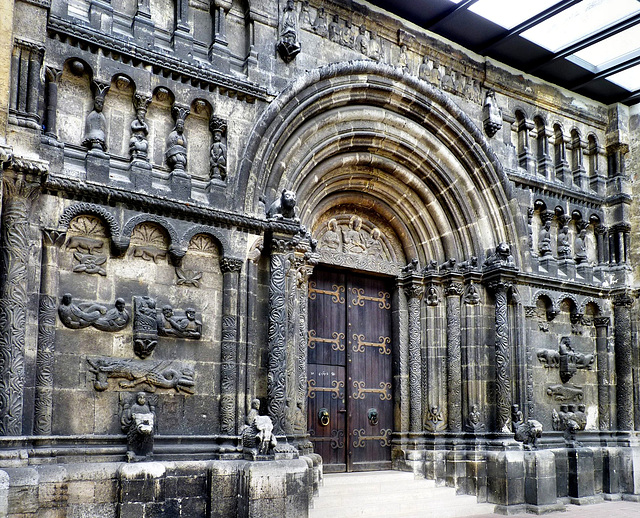Regensburg - Schottenkloster St. Jakob
Regensburg - Schottenkloster St. Jakob
Regensburg - Schottenkloster St. Jakob
Regensburg - Schottenkloster St. Jakob
Regensburg - Schottenkloster St. Jakob
Regensburg - Schottenkloster St. Jakob
Regensburg - Schottenkloster St. Jakob
Regensburg - Schottenkloster St. Jakob
Regensburg - Schottenkloster St. Jakob
Regensburg - Schottenkloster St. Jakob
Regensburg - Schottenkloster St. Jakob
Regensburg - Schottenkloster St. Jakob
Bamberg - Cathedral
Bamberg - Cathedral
Bamberg - Cathedral
Bamberg - Cathedral
Bamberg - Cathedral
Bamberg - Cathedral
Bamberg - Cathedral
Bamberg - Cathedral
Bamberg - Cathedral
Bamberg - Cathedral
Bamberg - Cathedral
Regensburg - Schottenkloster St. Jakob
Regensburg - Schottenkloster St. Jakob
Regensburg - Schottenkloster St. Jakob
Regensburg - Schottenkloster St. Jakob
Regensburg - Schottenkloster St. Jakob
Regensburg - Schottenkloster St. Jakob
Regensburg - Schottenkloster St. Jakob
Regensburg - Schottenkloster St. Jakob
Regensburg - Schottenkloster St. Jakob
Regensburg - Schottenkloster St. Jakob
Regensburg - Schottenkloster St. Jakob
Regensburg - Sankt Emmeram
Regensburg - Sankt Emmeram
Regensburg - Sankt Emmeram
Regensburg - Sankt Emmeram
Regensburg - Kneitinger
Regensburg - Kreuzkapelle am Bach
Regensburg - Kreuzkapelle am Bach
Regensburg - Dom
Regensburg - Dom
Regensburg - Dom
Regensburg
Location
See also...
Keywords
Authorizations, license
-
Visible by: Everyone -
All rights reserved
-
151 visits
Regensburg - Schottenkloster St. Jakob


A Benedictian monastery was founded by Hiberno-Scottish monks in Regensburg already around 1070. Soon after, the convent moved to a place just outside the city walls and in started to erect first buildings.
The first church, consecrated in 1120, was of such a poor workmanship, that the convent decided to tear it down (except one apse and the flanking towers) and restart the process. The church of today was completed before 1200. It is one of the most important Romanesque structures in Bavaria.
The abbey was a hub for the Irish/Scottish mission to central Europe. Daughter establishments of St. Jakob were founded in Vienna (1155), Erfurt (1136), Wuerzburg (1138), Nuremberg (1140), Constance (1142), Eichstaett (1148), Memmingen (1178), Kiev (!) (late 12th century) and Kelheim (13th century).
WHile the first monks and abbots were Irish, the Scottish period started after the Reformation with Scottish abbot Ninian Vincet (1577-1592). A century later Scottish priests were educated here to do missionary work back in Scotland.
Abbot Benedikt Aburthnot (1737-1820) could avoid the secularisation in 1802 by making clear, that the monastery was a Scottish (not at all Bavarian!) national treasure. It took upto 1814 to incorporate the Scottish monastery into the Bavarian sovereignty. Monastic life finally ended here in 1862, when the buildings were taken over by the bishop, who 10 years later founded a still existing seminary here.
The northern portal ("Schottenportal") is one of the most important (and largest) Romanesque works of art in Germany. It occupies about a third of the church´s northern wall and is divided into thirds both horizontally and vertically, plus a small frieze that tops the central arch (the vertical center).
While most authors reckon, that Irish masters created this portal, Marcel Durliat sees parallels to works in Northern Italy, created by the Comacine masters ("Magistri Comacini"). He even connects this portal to the carvings in Linden and Remagen. I doubt that..
The dimensions of the protective glass pavillion (and the limited features if my camera) made it impossible to get the portal "in toto" on one picture. The previous shot was done from the right, this one was done frm the left side of the portal.
The first church, consecrated in 1120, was of such a poor workmanship, that the convent decided to tear it down (except one apse and the flanking towers) and restart the process. The church of today was completed before 1200. It is one of the most important Romanesque structures in Bavaria.
The abbey was a hub for the Irish/Scottish mission to central Europe. Daughter establishments of St. Jakob were founded in Vienna (1155), Erfurt (1136), Wuerzburg (1138), Nuremberg (1140), Constance (1142), Eichstaett (1148), Memmingen (1178), Kiev (!) (late 12th century) and Kelheim (13th century).
WHile the first monks and abbots were Irish, the Scottish period started after the Reformation with Scottish abbot Ninian Vincet (1577-1592). A century later Scottish priests were educated here to do missionary work back in Scotland.
Abbot Benedikt Aburthnot (1737-1820) could avoid the secularisation in 1802 by making clear, that the monastery was a Scottish (not at all Bavarian!) national treasure. It took upto 1814 to incorporate the Scottish monastery into the Bavarian sovereignty. Monastic life finally ended here in 1862, when the buildings were taken over by the bishop, who 10 years later founded a still existing seminary here.
The northern portal ("Schottenportal") is one of the most important (and largest) Romanesque works of art in Germany. It occupies about a third of the church´s northern wall and is divided into thirds both horizontally and vertically, plus a small frieze that tops the central arch (the vertical center).
While most authors reckon, that Irish masters created this portal, Marcel Durliat sees parallels to works in Northern Italy, created by the Comacine masters ("Magistri Comacini"). He even connects this portal to the carvings in Linden and Remagen. I doubt that..
The dimensions of the protective glass pavillion (and the limited features if my camera) made it impossible to get the portal "in toto" on one picture. The previous shot was done from the right, this one was done frm the left side of the portal.
- Keyboard shortcuts:
Jump to top
RSS feed- Latest comments - Subscribe to the comment feeds of this photo
- ipernity © 2007-2024
- Help & Contact
|
Club news
|
About ipernity
|
History |
ipernity Club & Prices |
Guide of good conduct
Donate | Group guidelines | Privacy policy | Terms of use | Statutes | In memoria -
Facebook
Twitter

Sign-in to write a comment.